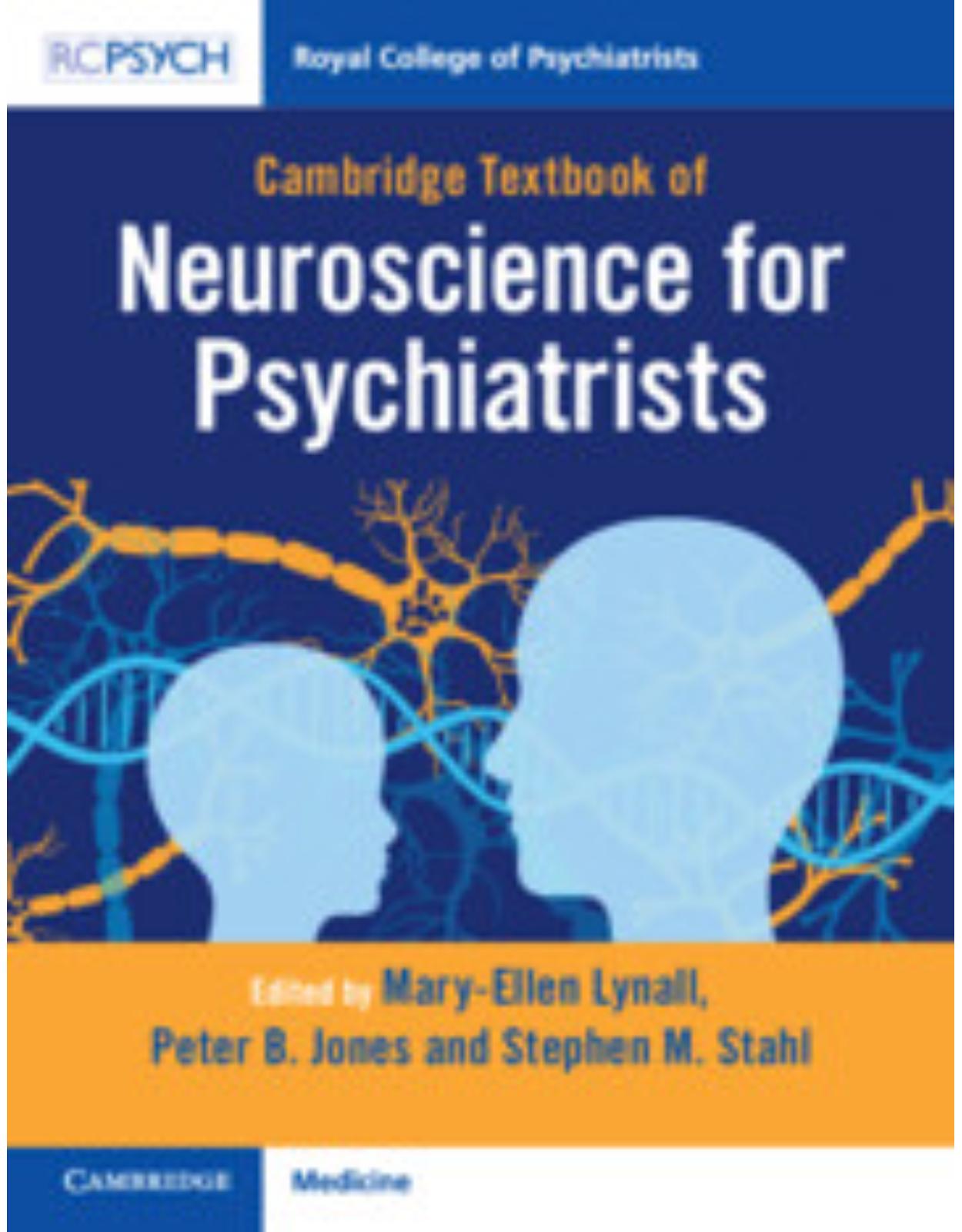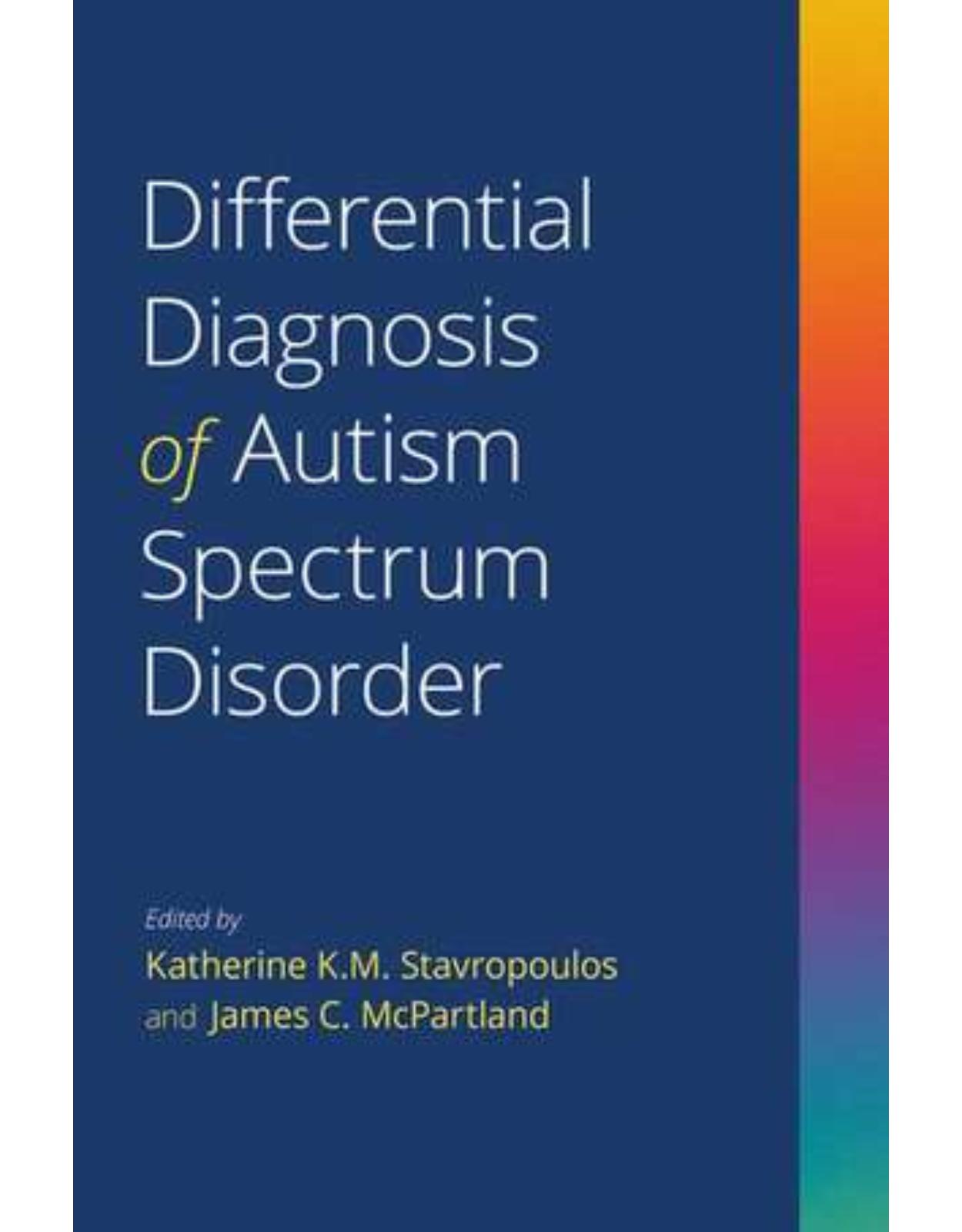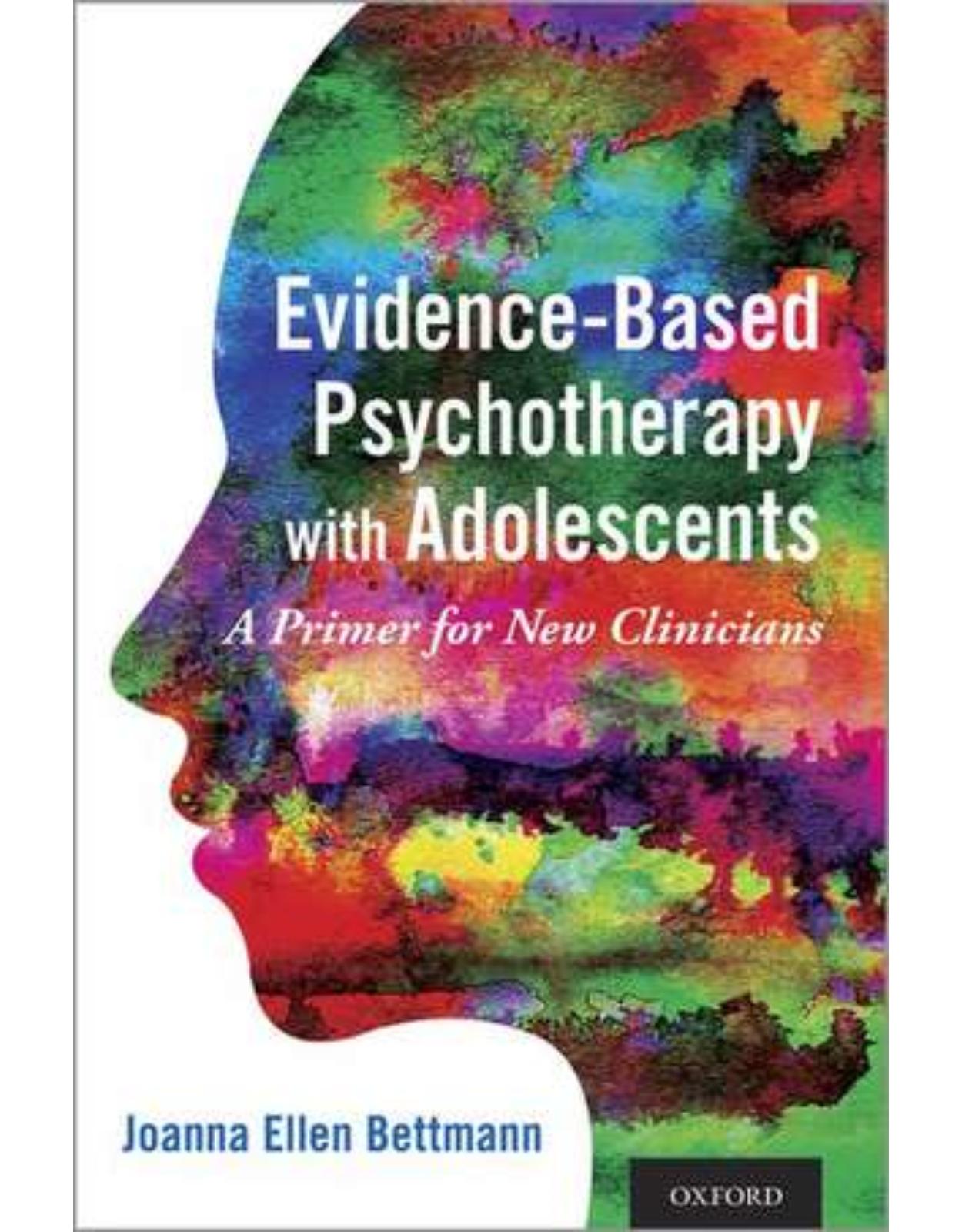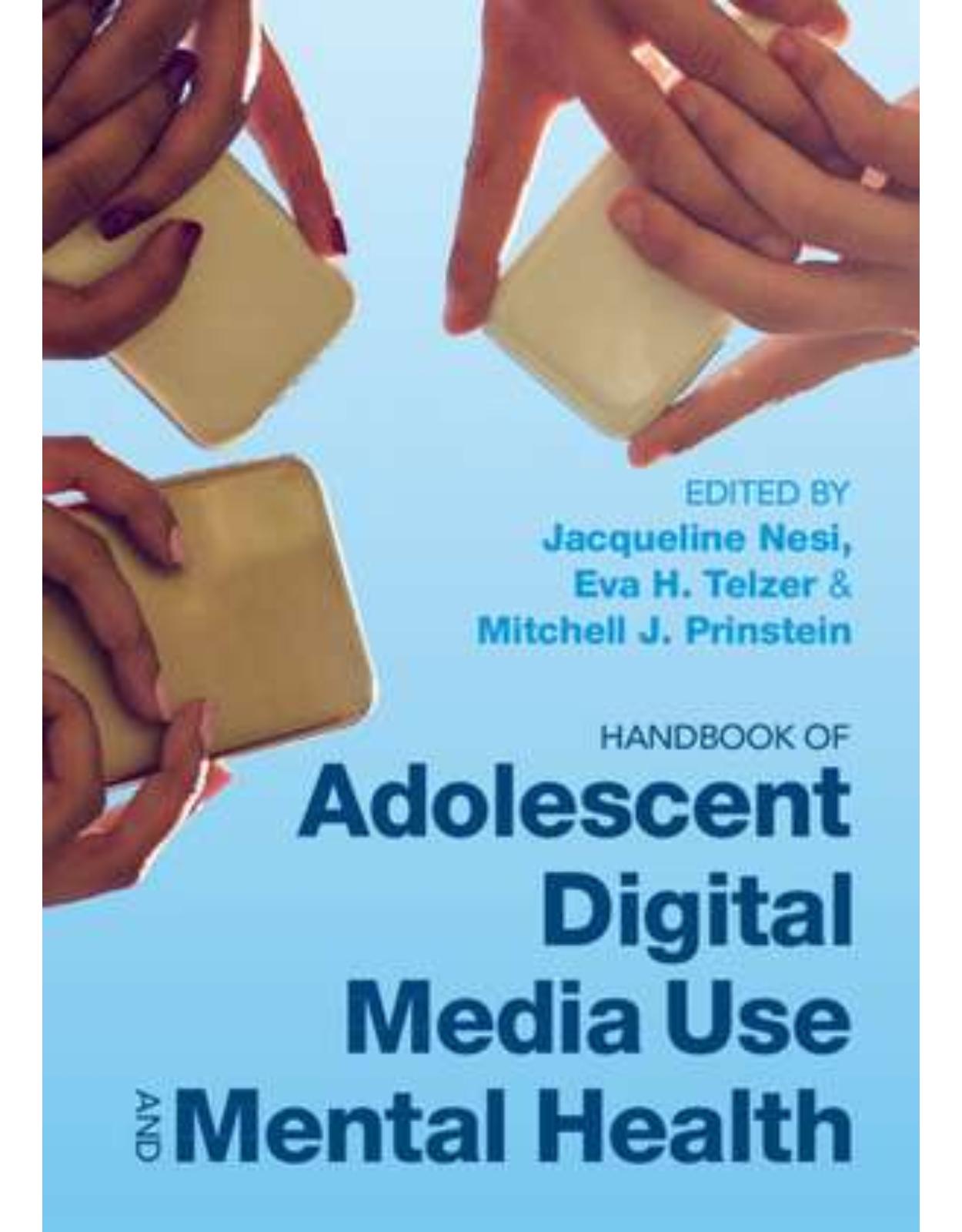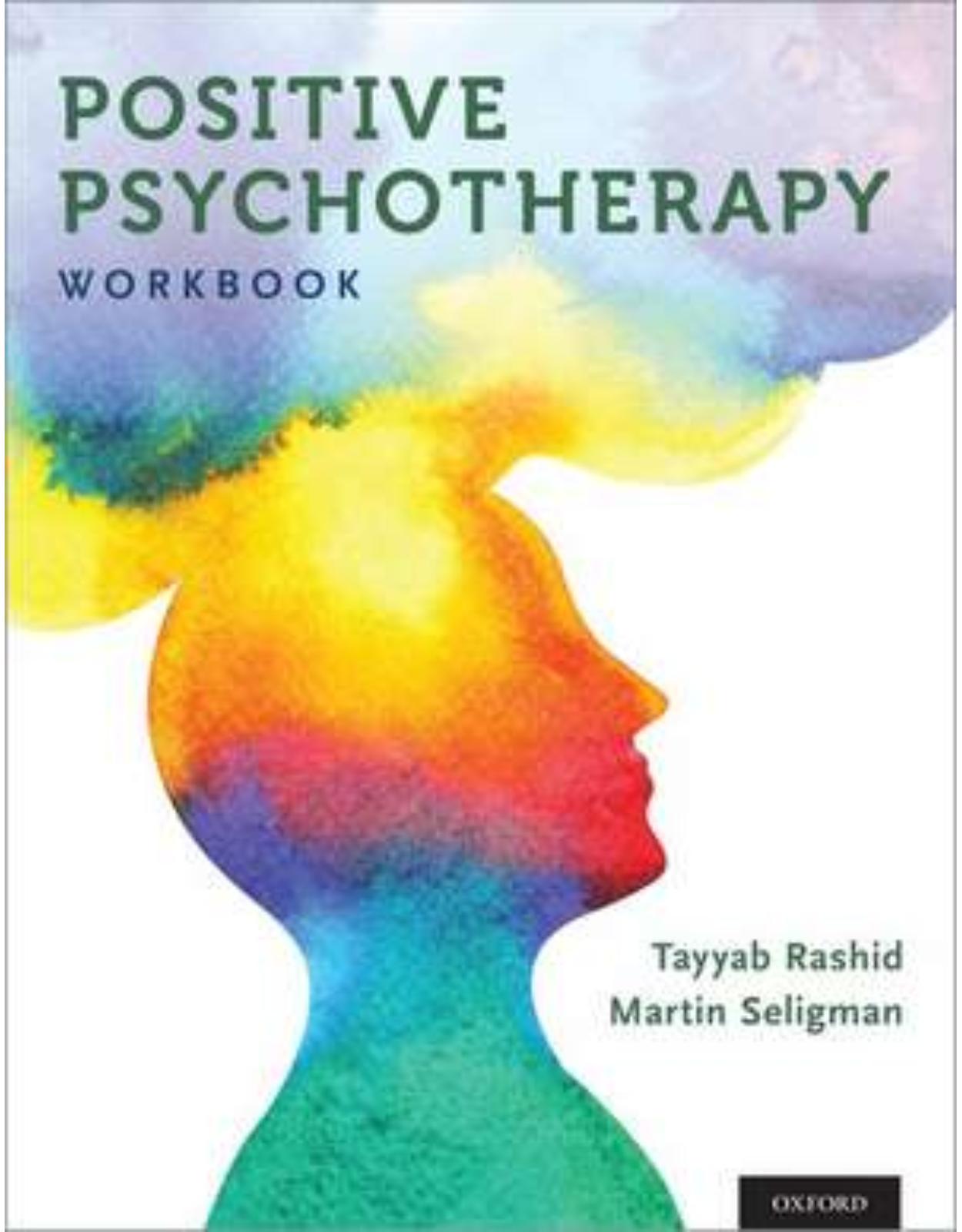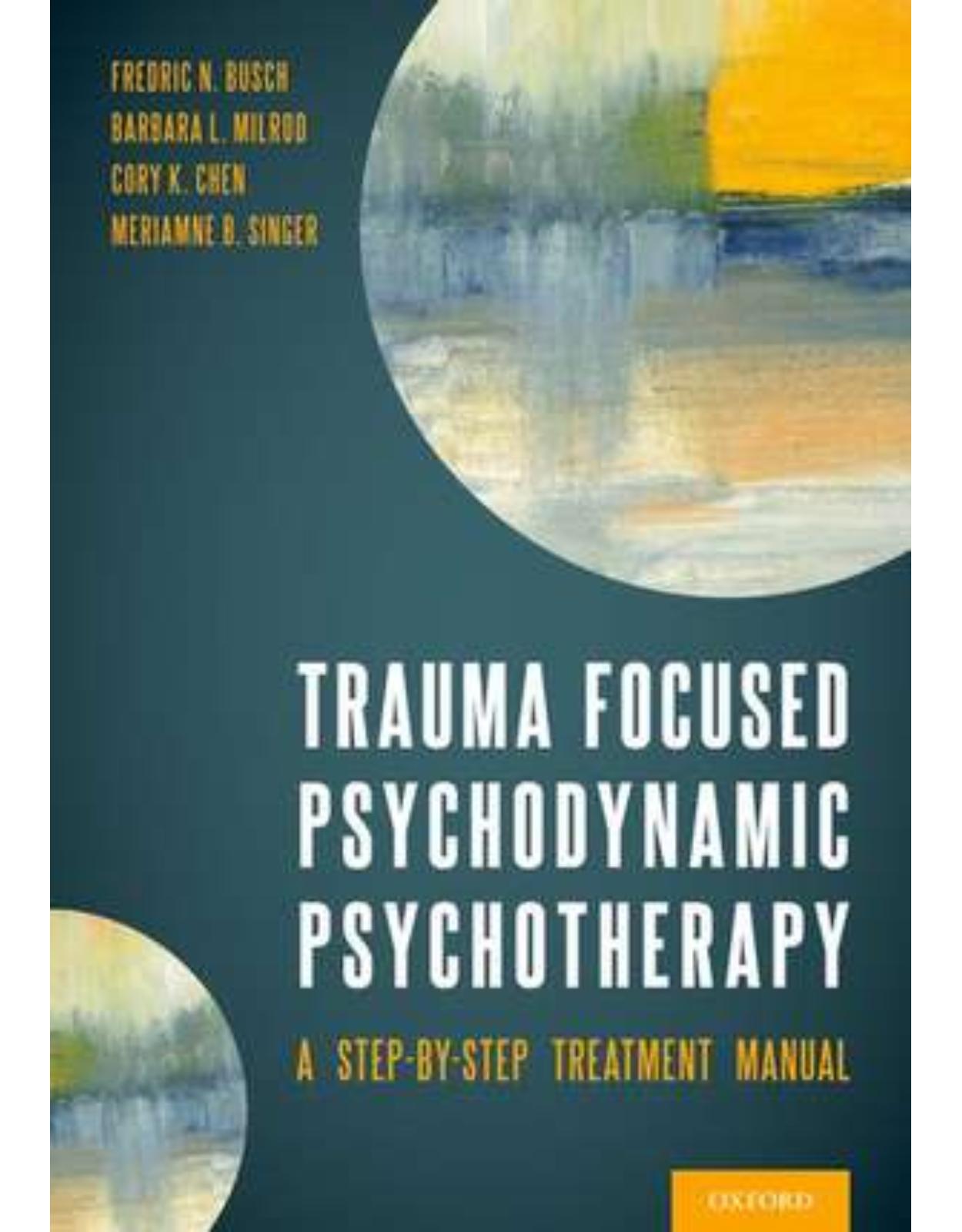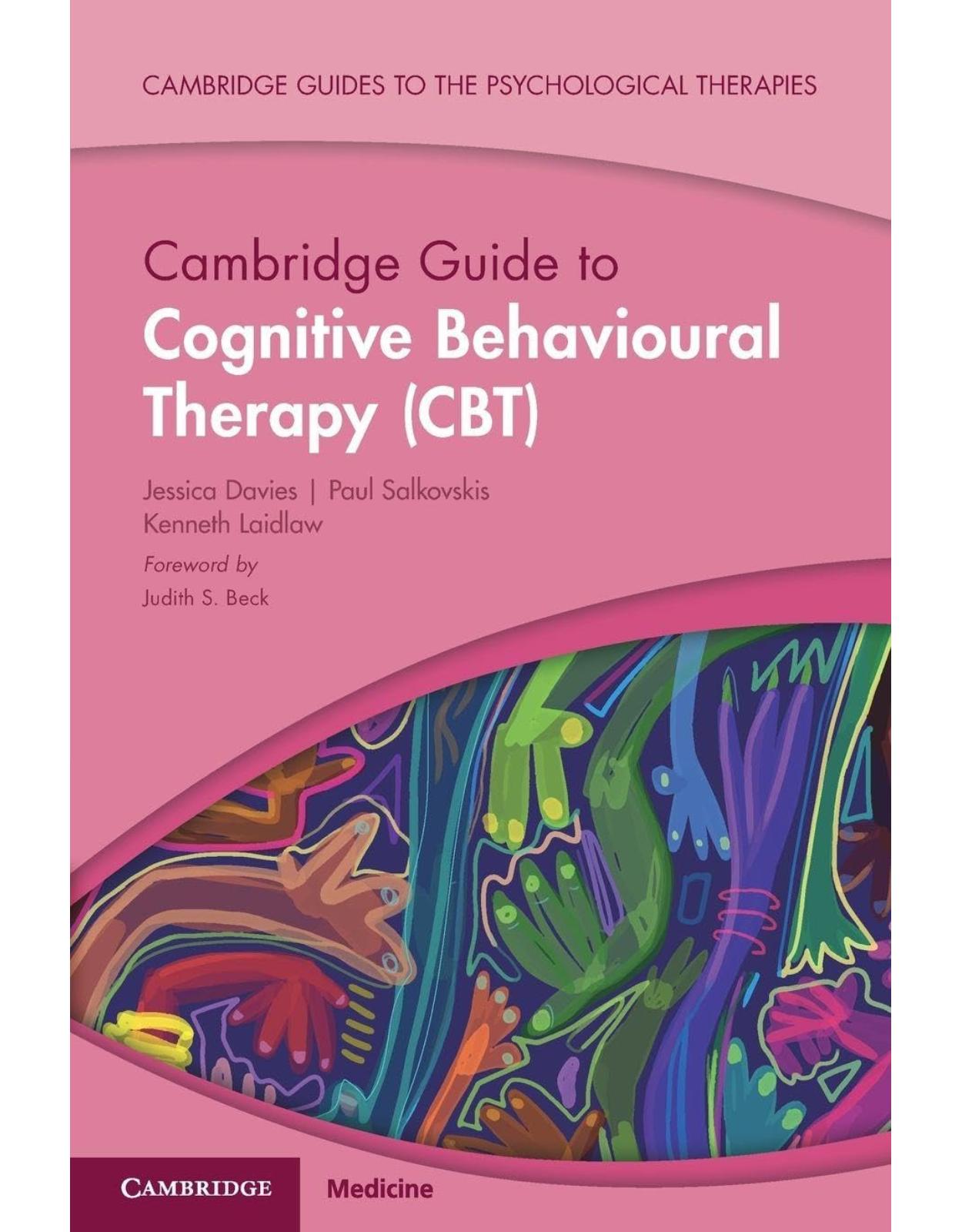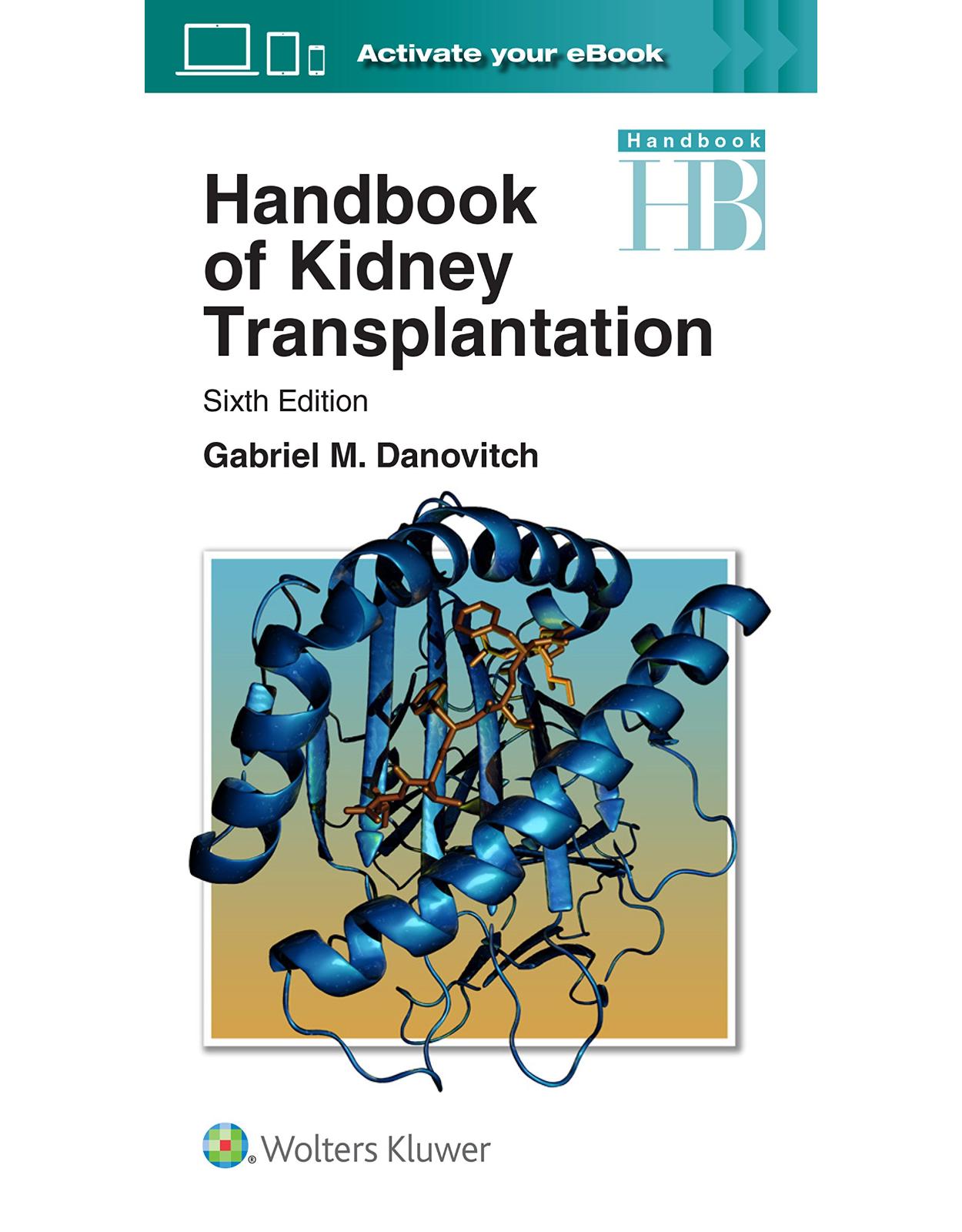
Neuropsychological Evaluation of the Child
Livrare gratis la comenzi peste 500 RON. Pentru celelalte comenzi livrarea este 20 RON.
Disponibilitate: La comanda in aproximativ 4 saptamani
Autor: Ida Sue Baron
Editura: Oxford University Press
Limba: Engleza
Nr. pagini: 1064
Coperta: Hardcover
Dimensiuni: 183 x 259 x 56 mm
An aparitie: 2 aug 2018
Description:
Neuropsychological Evaluation of the Child: Domains, Methods, and Case Studies, Second Edition, is an updated and expanded desk reference that retains the first edition's organizational structure, strong practical focus, and lifespan developmental perspective. It is a unique compilation of published and unpublished pediatric neuropsychological test normative data that contains extensive discussion of assessment methods and case formulation. Added for the first time are instructive clinical case vignettes that explicate brain-behavior relationships in youth, from preschool-age through adolescence. These cases illustrate immediate and late effects that result from common and rare medical diseases and psychological disorders, and highlight key issues that arise when examining a child's maturational trajectory and brain-behavioral relationships using convergence profile analysis. Part I, Child Neuropsychology: Current Status, contains four introductory chapters regarding definitions, education and training, and professional roles; reasons for referral; typical and atypical brain development; and clinical practice considerations. In Part II, Clinical Issues, discussion covers the procedural steps of neuropsychological assessment, behavioral assessment techniques, observational data, and oral and written communication of results. These chapters are followed in Part III, Domains and Tests, by extended coverage of topics and tests related to the major neuropsychological domains: intelligence, executive function, attention and processing speed, language, motor and sensory-perceptual function, visuoperceptual, visuospatial and visuoconstructional function, and learning and memory. A final chapter addresses deception in childhood, reasons why a child might reduce effort and invalidate assessment, and the use of performance validity tests, symptom validity tests, and embedded validity indicators to assess noncredible effort. Each of the 16 chapters includes definitions, theoretical concepts, models, and assessment techniques that are essential knowledge for clinical and research pediatric neuropsychologists.
Table of Contents:
Part I Child Neuropsychology: Current Status
1 Pediatric Clinical Neuropsychology: Growth of a Subspecialty
Educational, Clinical, and Research Guidelines
Clinical Practice Guidelines
Research Guidelines
Pediatric Neuropsychology
Board Certification in the Specialty of Clinical Neuropsychology
Subspecialization in Pediatric Clinical Neuropsychology
Lifespan Neuropsychology
Anecdotal Example
Fetal (Developmental) Origins Hypothesis
Expanded Roles for Pediatric Neuropsychologists
Clinical Practitioner
Use of Technicians/Psychometrists
Research Investigator
Rehabilitation and Intervention
Telecommunication/Telehealth Provider
Consultation
Expert Witness
Conclusion
References
2 Reasons for Referral
Referrals Due to Academic Difficulties
Referrals from Parents
Referrals Due to Disease, Disorder, or Injury
Outcome Prediction in a Developmental Context
The Kennard “Principle”
Growing into One’s Deficit: A Concept with Practical Implications
Referrals from Medical and Other Professionals
Anesthesia Exposure: Potential Etiology?
Anesthesia and Attention-Deficit/Hyperactivity Disorder and Learning Disability
Referrals for Serial Clinical Evaluation
Timing of Serial Evaluation
Serial Evaluation in Forensic Cases
Practice Effects
Serial Evaluation and Developmental Considerations
Referrals of Typically Developing Children
Referrals Due to Neurological “Soft Signs”
Referral for Longitudinal Developmental Research
Referral for Treatment, Management, and Rehabilitation
Reserve Capacity
Conclusion
References
3 Brain Development, Response to Injury, and Sociodemographic Influences
Typical Brain Development: Some Basics
Brain Development in Infancy and Childhood
Brain Development in Adolescence
Atypical Brain Development
Interrupted Brain Development: The Circumstance of Preterm Birth
Late Preterm Birth
Neuropsychological Outcomes of Preterm Birth
Gestational Age Effects
Response to Brain Injury or Disruption
Plasticity
Experience-Dependent Structural Plasticity
Plasticity in Response to Brain Dysfunction
Plasticity Under Extreme Conditions
Hemispherectomy, Hemidecortication, and Hemispherotomy
Diaschisis
Sociodemographic Factors
Race, Ethnicity, and Culture
Sex Differences
Socioeconomic Status
Poverty
Conclusion
References
4 Clinical Practice Considerations
Convergence Profile Analysis
Qualitative Observations and Error Analyses
Test Data Analysis
Testing Models
Maturational Model of Child Neuropsychological Development
A Pragmatic Approach
Alternate Test Forms
Reliable Change
Pediatric Neuropsychological Normative Data: Some Ideals and the Realities
Conclusion
References
Part II Clinical Issues
5 Behavioral Assessment
Pediatric Clinical Neuropsychological Evaluation: Methods
Intake Interview and Scheduling
Reviewing Records
History Taking
Interview of a Child
Preparatory Steps for Testing
Use of an Interpreter
Behavioral Observations
The Testing Environment
Establishing Rapport
Stereotype Threat
Diagnosis Threat
Third Party Observers
Initiating and Sustaining Test-Taking Behavior
Additional Suggestions for Clinical Practice
Observe Behavior and Take Notes
Use Behavioral Strategies
Remain in Control
Use Parents Wisely
Start Easy–End Easy
Provide Clear Feedback
Adapt the Environment
Consider the Options
Conclude the Test Session
Health-Related Quality of Life
Health and Behavior Inventory
Family Burden of Injury Interview
Inpatient Monitoring of Recovery
Cognitive and Linguistic Scale
Social Cognition: Communication, Awareness, Perception, and Emotion
PEERS: Pediatric Evaluation of Emotions, Relationships and Socialization
Tests, Scales, and Questionnaires
Alexithymia
Toronto Alexithymia Scale
Anxiety
Attention-Deficit/Hyperactivity Disorder
Autism Spectrum Disorder
Central Coherence
Theory of Mind
Mirror Neurons
Mood Disorder
Psychiatric Disorder
Sleep Disorder
General Behavioral Measures
Conclusion
References
6 Communication of Results: The Interpretive Session and the Written Report
The Interpretive Session
Information Exchange
Parental Education
Stages and Strategies of the Interpretive Session
Communicating Results Simply
Defining Terminology
Incorporating Parent Restatement
Providing Examples of Strengths and Weaknesses
Encouraging Questions
Interpretation to a Child
Summary
The Written Report
Clinical Report Writing
Score Interpretation
Standard Scores
Percentiles
Age- and Grade-Adjusted Scores
Base Rate Data and Low Scores
Demographic Considerations
Descriptive Labels
Is Average Really Average?
Writing for School Personnel
Inpatient Notes
Expert Witness Report Writing
Limitations of Clinical Psychological Evaluations
Sample Report Format
Conclusion
References
Part III Domains and Tests
7 Preliminary Screening Assessment and Classification Scales
Pediatric Neuropsychological Screening
Inpatient Screening Assessment
Outpatient Screening Assessment
Screening as a Substitute for Full Evaluation
Preliminary Screening as Means to an End
Screening of a Preschooler
Oral and Written Letters, Numbers, and Name Writing
Drawings
Receptive Language
Verbal and Nonverbal Reasoning
Motor Efficiency
Learning and Memory
Attention and Executive Function
Emotional Screening
Screening of a School-Aged Child
Oral and Written Alphabet, Number Sequence Production, and Name Writing
Drawing
Language
Inhibitory Capacity
Motor and Sensory–Perceptual Efficiency
Learning and Memory
Attention
Projective Evaluation and Mood
Barrow Neurological Institute Screen for Higher Cerebral Functions in School-Age Children
Screening of an Adolescent
Classification Scales and Guidelines
Apgar Score
Children’s Coma Scale
Children’s Orientation and Amnesia Test
Concussion and Traumatic Brain Injury Classification Grading
Glasgow Coma Scale
International League Against Epilepsy Guidelines: 2014
Rancho Los Amigos Pediatric Level of Consciousness Scale
Screening Tests and Behavioral Questionnaires
Conclusion
References
8 Intelligence Testing: General Considerations
A Brief History of Intelligence Testing
Diagnostic and Statistical Manual of Mental Disorders, Fifth Edition: Recommendations
Intelligence and Neurological Status
Toxoplasma gondii
Stability of IQ
Estimation of Premorbid IQ: Baseline Determination
Intelligence and Preterm Birth
Intelligence Tests: Service or Disservice?
Advantages of Intelligence Tests
Limitations of Intelligence Tests
Intelligence Test Measures
Differential Ability Scales
Differential Ability Scales-II
Wechsler Series Intelligence Tests
Wechsler Intelligence Scale for Children–Fourth Edition
Wechsler Intelligence Scale for Children–Fifth Edition
Wechsler Nonverbal Scale of Ability
Wechsler Preschool and Primary Scale of Intelligence–Fourth Edition
Wechsler Abbreviated Scale of Intelligence
Kaufman Tests
Kaufman Assessment Battery for Children, Second Edition
Kaufman Adolescent and Adult Intelligence Test
Kaufman Brief Intelligence Test, Second Edition
Reynolds Intellectual Assessment Scales, Second Edition
Comprehensive Test of Nonverbal Intelligence, Second Edition
Test of Nonverbal Intelligence, Fourth Edition
Cognitive Assessment System, Second Edition
Neurodevelopmental and Preschooler Assessment
Bayley Scales of Infant Development–Second Edition
Bayley Scales of Infant and Toddler Development–Third Edition
McCarthy Scales of Children’s Abilities
Mullen Scales of Early Learning
Merrill–Palmer-Revised Scales of Development
Stanford–Binet Intelligence Scale
Leiter International Performance Scales–Third Edition
Developmental Neuropsychological Assessment
NEPSY and NEPSY-II: A Developmental Neuropsychological Assessment
Age Correction for Preterm Birth
Descriptive Labels
Rapid IQ Test Development and Ethically Mandated Test Purchase
Flynn Effect
Research Cognition Battery
NIH Toolbox Cognition Battery
Conclusion
References
9 Executive Function
Historical Perspective: Phineas Gage
Executive Function Definitions
Explaining Executive Function to Parents
Executive Function Circuitry
Child–Adult Executive Function Differences
Dorsolateral Prefrontal Circuit
Anterior Cingulate Circuit
Orbitofrontal Circuit
Executive Function and Frontal–Subcortical Circuitry
Ventromedial Prefrontal Cortex, Moral Judgment, and Social Decision-Making
Rostrolateral Prefrontal Cortex and Relational Reasoning
Developmental Trajectories
Conceptualizations of Executive Function
Hot and Cool Executive Function
Working Memory
Central Executive System
Phonological Loop and Visuospatial Sketchpad
Episodic Buffer
Updating, Shifting, and Inhibition Processes of the Central Executive System
Age and Working Memory Development
Cultural Influences on Verbal Working Memory
Interference Control
Inhibition
Age Effects
Inhibition and ADHD
Clinical Observations of Inhibitory Function
Double Dissociation
Executive Function and Intelligence
Executive Function and Socioenvironmental Influences
Executive Function and Preterm Birth
Executive Function and Genetic Syndromes
Executive Function Assessment in Children and Adolescents
Test Choice
Confounds in Executive Function Assessment
Error Analysis
Perseveration
Intrusion
Closing-in Behavior
Executive Function and Ecological Validity
Executive Function Subdomains and Tests
Inhibition and Interference Control
Eriksen Flanker Task
Attentional Network Test
Go/No-Go Tests
Reciprocal Motor Movements Tasks
Archibald and Kerns Go–No Go Task
Hayling Sentence Completion Test
Logan Stop Signal Task
Stroop Color–Word Test
Versions of the Stroop Procedure
Original Stroop Version
Golden Version
Regard Version
Comalli Version
Dodrill Version
Trenerry Version
Computerized Measures for Preschoolers
Boy–Girl Stroop
Day–Night Stroop
Sun–Moon Stroop
Fruit Stroop
Other Versions
Working Memory
n-Back Procedure
Delayed Alternation/Non-Alternation
Self-Ordered Pointing Test
Jack’s Boxes
Spin the Pots
Missing Scan Method
Digit Ordering Test
Topographical Working Memory
The Walking Corsi Test
Developmental Topographic Disorientation
Differential Ability Scales-II Working Memory Index
Cambridge Neuropsychological Test Automated Battery
Planning, Organizing, Reasoning, and Set Shifting
Contingency Naming Test
Scoring the CNT
Category Test and Wisconsin Card Sorting Test
Category Test
Findeis and Weight Meta-Norms
Wisconsin Card Sorting Test
Modified Wisconsin Card Sorting Test
Dimensional Change Card Sort Task
Concept Generation Test
Tower of Hanoi
Tower of London
Tower of London–Drexel University, Second Edition
NEPSY and NEPSY-II Tower Tests
Delis–Kaplan Executive Function System Tower Test
Monkey Tree Test
Porteus Maze Test
Matching Familiar Figures Test
Cognitive Flexibility Tests Using Drawing
Matrices
Raven’s Coloured Progressive Matrices Test
Verbal Fluency
Neuroanatomy of Verbal Fluency
Letter Fluency
Noun Fluency
Action-Verb Fluency
Action-Verb Fluency and Preterm Birth
Action-Verb Fluency Instructions and Data for Children Aged 3 and 6 Years
Neuroanatomic Circuitry of Verb Naming
Qualitative Analyses of Word Generation: Clustering and Switching
Fluency in Childhood
Verbal Fluency Tests
Verbal Fluency for Letters
Verbal Fluency: Letter F
NEPSY-II Verbal Fluency
Verbal Fluency: Letters F, A, and S
Verbal Fluency: Letters C, F, and L
Verbal Fluency: Letters C, P, B, and R
Animals, Letter B, and Letter S
Verbal Fluency for Category: Semantic Fluency
Animal Fluency
McCarthy Scales of Children’s Abilities: Category Fluency
Multilingual Aphasia Examination: Semantic Fluency
First Name Fluency
Naming of Animals, Foods, and Words Beginning with “sh”
Homophone Meaning Generation Test
Thurstone Word Fluency Test
Design Fluency Tests
Five-Point Test
NEPSY Design Fluency Modification
Ruff Figural Fluency Test
Delis–Kaplan Executive Function System: Design Fluency
Estimation Tests
Biber Cognitive Estimation Test
Time Estimation
Visuomotor Tests
Repeated Patterns Test
Graphical Sequences Test
Alternating Sequences Tests
Executive Function Test Batteries
Delis–Kaplan Executive Function System
Behavioural Assessment of the Dysexecutive Syndrome for Children
Pediatric Studies Using the BADS-C
Adolescent Studies Using the BADS
Adult Studies Using the BADS
Cambridge Neuropsychological Test Automated Battery
Preschool Executive Function Battery
Preschooler Hot and Cool Executive Function Battery
Preschooler Battery
Simon Task
Amsterdam Neuropsychological Tasks
Executive Function Rating Scales and Questionnaires
Comment on Behavioral Rating Questionnaires
Conclusion
References
10 Attention and Processing Speed
Subdomains of Attention
Focused and Selective Attention
Divided Attention
Sustained Attention
Alternating Attention/Task Set Shifting
Executive Attention/Cognitive Control
Subdomain Developmental Course
Models of Attention
Attention-Deficit/Hyperactivity Disorder
Incidence and Prevalence
Diagnosis of ADHD
Clinical Evaluation of ADHD
Treatment of ADHD
Attentional Problems Not ADHD
Neural Circuitry of ADHD
Clinical Realities
Sluggish Cognitive Tempo
Sluggish Cognitive Tempo Scale
Neuropsychology’s Contributions to Evaluation of Attention
Preschoolers and Attentional Deficit
Preterm Birth and Attentional Deficit
ADHD and Comorbid Motor Control Deficit
ADHD and Comorbid Processing Speed Deficit
Tests of Attention
Span Tests
Digit Span
Knox Cube Test
Corsi Block-Tapping Span Test
Alpha Span Test
Pattern Span
Word Span
Reading Span
Category Listening Span Dual-Task
Visuospatial Span Dual-Task
Trail Making Tests
Trail Making Test
Part A Versus Part B
Delis–Kaplan Executive Function System Trail Making Test
Trail Making Test Error Analysis
Children’s Color Trails Test
Progressive Figures Test and Color Form Test
Comprehensive Trail Making Test
Tests of Divided Attention
Auditory Consonant Trigrams Test
Index of Sustained Effort and Attention for the ACTT
Children’s Paced Auditory Serial Addition Test
Tests of Sustained Attention
Symbol Digit Modalities Test
Dichotic Listening
Tests of Focused/Selective Attention
Visual Search Cancellation
Verbal and Nonverbal Cancellation Tests for Children
Cancellation of Targets
d2 Test of Attention
The Underlining Test
Attention Test Batteries
Test of Everyday Attention for Children and Test of Everyday Attention for Children–Second Edition
Computerized Tests of Attention
Preschooler Continuous Performance Tests
Behavioral Questionnaires and Structured Interviews
Conclusion
References
11 Language
Clinical Evaluation of Language
Spontaneous Conversational Fluency
Automatic Language Sequences
Right–Left Orientation
Naming
Visual Confrontational Naming
Object Naming
Color Naming
Verbal Fluency
Stuttering and Stammering
Phonological Processing
Comprehension
Repetition
Written Language
Handwriting Position
Dysgraphia
Apraxic Agraphia
Unilateral Agraphia (Callosal Apraxia)
Micrographia
Macrographia (Megalographia)
Hypergraphia
Mirror Writing
Dysantigraphia
Reading
Pure Alexia
Dyslexia
Deep Dyslexia
Hyperlexia
Savant Syndrome
Neglect Dyslexia
Phonological Dyslexia
Surface Dyslexia
Spelling
Numeracy
Praxis
Language Lateralization
Genetic Contribution to Language
Bilingualism
Bilingualism and Preterm Birth
Neuroimaging and Bilingualism
Clinical Practice with Bilinguals
Preterm Birth and Language
Aphasia
Aphasia Subtypes
Subcortical Aphasia
Acquired Epileptiform Aphasia (Landau–Kleffner Syndrome)
Williams Syndrome
Foreign Accent Syndrome
Case Examples
Cysticercosis
Internal Capsule Ischemia
Language and Ambidexterity
Juvenile Pilocytic Astrocytoma
Right Hemisphere Lesion and Language Impairment
Idiopathic Thrombocytopenic Purpura
Thalamic Brain Tumor
Cerebrovascular Accident
Language Tests and Batteries
Aphasia Screening Tests
Halstead–Wepman Aphasia Screening Test
Boston Diagnostic Aphasia Examination
Spreen–Benton Aphasia Test or Neurosensory Center Comprehensive Examination for Aphasia
Jordan Left–Right Reversal Test
Phonological Processing
Auditory Analysis Test
Naming
Boston Naming Test
Martielli and Blackburn Boston Naming Test Data for Adolescents
Mattson Boston Naming Test Data for Age 4 Years
Auditory and Visual Naming Tests for Children
Rapid Automatized Naming
Naming Errors
Receptive and Expressive Language
Test de Vocabulario en Imagenes
Object Definition Test
Auditory Perception
Speech Sounds Perception Test
Seashore Rhythm Test
Other Measures
Conclusion
References
12 Motor Examination
Motor Disorders
Abnormal Motor Movements and Their Etiologies
Complex Motor Stereotypies
Motor Soft Signs
Mirror Movements (Motor Overflow)
Basal Ganglia
Direct Pathway
Indirect Pathway
Hyperdirect Route
Motor, Associative, and Limbic Subregions
Internal Capsule
Anterior Limb
Genu
Posterior Limb
Syndrome Presentations
Cerebellum
Congenital Versus Acquired Lesions
Age Effects
Right Cerebellum Versus Left Cerebellum
Lesion Size
Cerebellum and Preterm Birth
Cerebellar Syndromes
Trichotillomania
Cerebellar Cognitive Affective Syndrome
Cerebellar Mutism Syndrome/Posterior Fossa Syndrome
Elective or Selective Mutism
Joubert Syndrome
Pediatric Multiple Sclerosis
Cerebral Palsy
Gross Motor Functional Classification Scale
Manual Ability Classification System
Developmental Coordination Disorder
Imitation Behavior and Utilization Behavior
Anarchic Hand/Alien Hand Syndrome
Frontal Variant
Callosal Variant
Posterior Variant
Motor Tests
Motor Soft Signs and Sequencing
Synkinesis
Timed Motor Examination
Finger Sequencing
Hand Pronation–Supination Test
Luria’s Fist–Edge–Palm Test
Push–Turn–TapTap Task
Oseretskii Test of Reciprocal Coordination
Associated Movements
Lateral Dominance: Handedness
Handwriting
Right–Left Orientation
Praxis and Apraxia
Ideomotor Apraxia
Ideational Apraxia
Conceptual Apraxia
Limb-Kinetic Apraxia
Conduction Apraxia
Other Types of Apraxia
Praxis Assessment
Pantomime Recognition
Motor Speed, Dexterity, Strength, Coordination, and Balance
Movement Assessment Battery for Children-2
Peabody Developmental Motor Scales-2
Bruininks–Oseretsky Test of Motor Proficiency
Finger Tapping Test
Findeis and Weight Meta-Normative Data
Mandernach et al. Adolescent Normative Data
Bilateral Alternating Finger Tapping Test
Grooved Pegboard Test
Grooved Pegboard: Age 4
Purdue Pegboard Test
Adolescent Normative Data for the Purdue Pegboard
Grip Strength Test
Psychomotor Problem Solving
Tactual Performance Test
Conclusion
References
13 Sensory–Perceptual Examination
Sensory–Perceptual Test Advantages
Visual, Verbal, and Tactile Agnosia
Anosognosia
Anosodiaphoria
Auditory Agnosia
Autotopagnosia
Color Agnosia
Mirror Agnosia
Prosopagnosia
Simultanagnosia
Tactile Agnosia
Topographagnosia or Topagraphical Disorientation
Visual Agnosia
Kluver–Bucy Syndrome
Developmental Prosopagnosia
Clinical Interpretation
Unilateral Versus Bilateral Errors
Static/Chronic Versus Progressive Profiles
Sensory–Perceptual Tests
Reitan–Kløve Sensory-Perceptual Examination
Double Simultaneous Stimulation Testing
Finger Recognition (Finger Agnosia) Testing
Agenesis of the Corpus Callosum
Gerstmann Syndrome
Angular Gyrus Syndrome
Fingertip Symbol Writing Recognition and Fingertip Number Writing Recognition
Tactile Form Recognition
Benton Finger Localization Test
Quality Extinction Test
Sensory Profile
Semmes–Weinstein Monofilaments
Color Perception
Supplemental Case Examples
Visual Field Defects and Lesion Localization
Deafness and Hearing Impairment
Cranial Nerves
Conclusion
References
14 Visuoperceptual, Visuospatial, and Visuoconstructional Function
Dorsal Visual Stream and Ventral Visual Stream Pathways
Nonverbal Test Interpretation
Obstacles to Interpretation of Nonverbal Function
Qualitative and Quantitative Data
Adult Tests Extended Downward Versus Tests Developed for Children
Right Hemisphere Versus Left Hemisphere
Gender Differences in Nonverbal Competence
Nonverbal Learning Disability
Global–Local Processing
Verbal–Performance Split
The Brain’s Ventricular System
Evaluation of Perceptual and Spatial Abilities
Turner Syndrome
Cortical Blindness
Perceptual and Spatial Tests
Visual Neglect and Line Bisection
Visuoconstructional Tests
Structured Drawings
Beery Developmental Test of Visual–Motor Integration
Matching Figures, Matching V’s, Matching Pictures, Star Test, and Concentric Squares Test
Clock Face Drawing
Wide Range Assessment of Visual Motor Abilities
The Test of Spatial Abilities
Perceptual Tests: Nonconstructional
Experimental Measures
Mooney Test of Incomplete Face Perception
Mooney–Verhallen Test
Gollin Incomplete Figures Test
Poppelreuter–Ghent Overlapping Figures Test
Clinical Tests of Face Recognition and Face Memory
Benton Facial Recognition Test
Cambridge Face Memory Test for Children
Ekman 60 Faces Test
Rivermead Behavioural Memory Test for Children: Face Recognition Subtest
The Kaufman Assessment Battery for Children: Facial Recognition Subtest
NEPSY-II: Face Recognition Subtest
Visuospatial Function Without a Motor Component
Test of Visuospatial Construction
Judgment of Line Orientation Test
Hooper Visual Organization Test
Children’s Size-Ordering Task
Planning, Organization, and Navigation
Wechsler Mazes and Porteus Mazes
Standardized Road Map Test of Directional Sense (Money Road Map Test)
The Santa Barbara Sense-of-Direction Scale
Additional Tests
References
15 Learning and Memory
Memory Systems
Medial Temporal Lobe and Hippocampus
Patient P.B.
Patient H.M.
Diencephalon
Patient N.A.
Basal Forebrain
Confabulation
Confabulation by Children
Infant Memory Development
Amnesia
Infantile Amnesia or Childhood Amnesia
Developmental Amnesia
Paramnesia and Delusional Misidentification Syndromes
Transient Global Amnesia
Dissociative Amnesia
Memory Terminology
Anterograde Memory
Associative Memory
Autobiographical Memory
Consolidation
Echoic Memory
Encoding
Episodic Memory
Everyday Memory
Explicit or Declarative Memory
Immediate Memory
Implicit, Procedural, or Nondeclarative Memory
Long-Term Memory
Metacognition and Metamemory
Primary Memory
Prospective Memory
Types of Prospective Memory
Age Differences Affect Prospective Memory
Tests of Prospective Memory
Recognition: Recollection and Familiarity
Wernicke–Korsakoff Syndrome
Retrieval and Recognition
Lesion Location Influences
Remote Memory
Retrograde Amnesia
Semantic Memory
Short-Term Memory
Source Memory
Spatial Location Memory
Spatial Location Memory Development in Infants and Preschoolers
Tests of Spatial Location Memory
Topographical Memory
Working Memory
Amnestic Disorder in Childhood: Case Examples
Anoxia
Carbon Monoxide Exposure
Near-Drowning
Asthma
Third Ventricle Brain Tumor
Choroid Plexus Papilloma
Memory Batteries
Rivermead Behavioural Memory Test For Children
NEUROPSI Attention and Memory
NEPSY and NEPSY-II: Learning and Memory Subtests
Child and Adolescent Memory Profile
Wide Range Assessment of Memory and Learning
Tests of Verbal Learning and Memory
Verbal Selective Reminding Test
Rey Auditory Verbal Learning Test
California Verbal Learning Test–Children’s Version
CVLT-C Administration and Scoring
Hopkins Verbal Learning Test–Revised
Sentence Memory
Multilingual Aphasia Examination: Sentence Repetition
Paired Associate Learning
Wechsler Memory Scale–Revised Logical Memory
Story Recall
Tests of Nonverbal Learning and Memory
Wechsler Memory Scale–Revised Visual Reproduction
Benton Visual Retention Test–Fifth Edition
Rey–Osterrieth Complex Figure Test
Administration
Interpretation
Alternate Designs
Validity Data
Developmental Trends
Scoring Systems
Scoring Hemi-Inattention
Developmental Scoring System
Rey Complex Figure Organizational Strategy Score (RCF-OSS)
Boston Qualitative Scoring System
Rey Complex Figure Test and Recognition Trial
Normative Data
Special Population Data: Deaf Children
Baltimore Board, Early Childhood Version
Administration Procedure and Instructions
Rey Visual Design Learning Test
Extended Complex Figure Test
Continuous Recognition Memory Test and Derivations
Continuous Recognition Memory–Pre(school)
Brown–Scott Continuous Picture-Recognition Test
Continuous Visual Memory Test
Nonverbal Selective Reminding Test
Biber Figural Learning Test
Target Test
Memory Questionnaires
Everyday Memory Questionnaire
Observer Memory Questionnaire–Parent Form
Memory Training Program
Amsterdam Memory and Attention Training–for Children
Memory Test for Adults
References
16 Validity Testing
Validity Test Terminology
Performance Validity Tests
Symptom Validity Tests
Embedded Validity Indicators
Validity Tests in Neuropsychological Practice
Validity Tests in Research
Validity Tests Versus Clinical Judgment
Early Validity Test Methods
Malingered Neurocognitive Dysfunction
Slick Criteria
Adult Simulation Studies
Multiple Effort Indicators and Embedded Measures
Validity Tests in Pediatric Assessment
Deception by Children and Adolescents
Intelligence Level and Validity Testing
Age Limits for Pediatric Validity Testing
Conditions with a High Probability of Noncredible Effort
Embedded Validity Indicators in Pediatric Assessment
Pediatric Simulation Studies
Validity Test Use in Clinical Pediatric Practice
Examiner Judgment
Pediatric-Adult Validity Test-Taking Differences
Reasons for Insufficent Effort
Red Flags in Pediatric Effort Assessment
Overt Resistance and Oppositional Behavior
Inconsistencies in Performance
Atypical Errors
Impaired Performance on Tasks Usually Easily Accomplished
Feigned Ignorance
Poor Motivation
Game Playing
Malingered Neurocognitive Dysfunction by Proxy
Malingering, Factitious Disorder, and Somatoform Disorder
Malingered Neurocognitive Dysfunction by Proxy Apparent: How to Proceed?
Validity Test Statistic Review
Sensitivity, Specificity, Positive Predictive Value, and Negative Predictive Value
Likelihood Ratio
Base Rate
Hit Rate
Effect Size
Performance Validity Tests
Amsterdam Short-Term Memory Test
Computerized Assessment of Response Bias
Dot Counting Test
Medical Symptom Validity Test
Nonverbal Medical Symptom Validity Test
Rey 15-Item Visual Memory Test
Test of Memory Malingering
Timed Automatized Sequences
21-Item Test
Victoria Symptom Validity Test
Word Memory Test
Rating Scales and Self-Report Questionnaires
Symptom Validity Scale for Low Functioning Individuals
Self-Report Behavioral Questionnaires
Embedded Indicators
Reliable Digit Span
Wechsler Intelligence Scale for Children–Fourth Edition: Digit Span Scaled Score
California Verbal Learning Test-Children’s Version
Raven’s Standard Progressive Matrices Test
CNS Vital Signs
| An aparitie | 2 aug 2018 |
| Autor | Ida Sue Baron |
| Dimensiuni | 183 x 259 x 56 mm |
| Editura | Oxford University Press |
| Format | Hardcover |
| ISBN | 9780195300963 |
| Limba | Engleza |
| Nr pag | 1064 |

